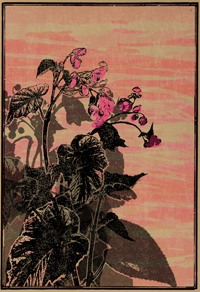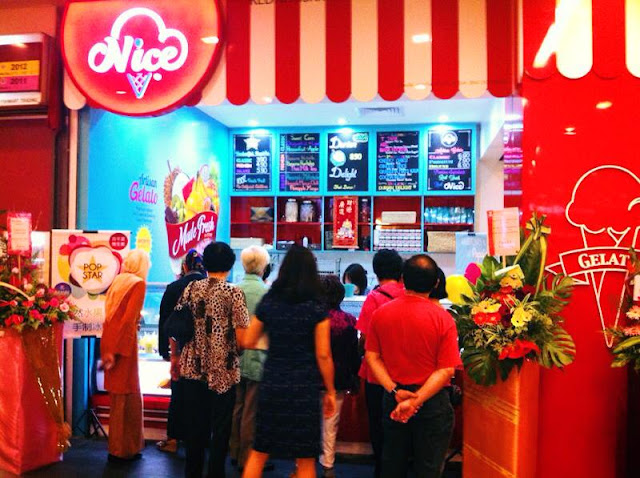BOUNTIFUL NATURE: Students cultivate a relationship with the environment by getting to know local trees, plants, fruits and flowers by name
JOHORE BAHRU: JOHOR Green, a social enterprise with a concern for green issues in the state, recently engaged a group of 30 students from Sri Ara Private School about our landscape.
Facilitator Chris Parry, who is Johor Green founder, said that our landscape defines our identity and challenged the students to think about Johor's green heritage.
Foreign students including Japanese, Australian, Indian, Pakistani and Malaysians gave interesting responses which are indicative of how urbanisation and modern consumerism has changed our perception of the landscape in our neighbourhood.
While the delicate rose is the pride of England, the Japanese treasure their cherry blossoms and even have festivals to celebrate them. When we think of the landscape in the Wild Wild West, thoughts of the desert, cactus and tumbleweed come to mind.
Cowboys are so inspired by their landscape that they composed songs about lonesome pines and the prairies.
Very often we are better acquainted with flora and fauna that we see in movies and hear from songs rather than those at our very doorstep.
In fact, many of our local plant species have been overshadowed by the more showy South American species like heliconias and bougainvillea.
Is it then not surprising to discover that our national flower, the hibiscus or bunga raya, is not native to Malaysia?
Parry, a former New York-based graphic artist, is a textile designer with a passion for botany and gardening.
Having lived abroad for many years, he has a special affinity for local flora and encouraged the students to cultivate a relationship with the environment by getting to know local trees, plants, fruits and flowers by name.
By illustrating that we respond more spontaneously to helping people we know by name rather than to strangers, he hoped that the students will get better acquainted with local botanical treasures and value our environment for future generations.
To create an awareness of the wealth of our green heritage, the students were introduced to a range of local plants, many of which are usually ignored on roadsides or uninvited into our gardens.
As Parry discussed with the students, a variety of twigs with leaves and flowers were passed around for the students to touch and smell.
He encouraged them to learn their common and scientific names, where they commonly grow, how they can be an inspiration for art and their cultural and heritage importance in our community.
A recent Johor Green initiative called Our Green Heritage is portrayed in original artworks that feature familiar Malaysian flora for sale as posters, notebooks and cards.
Some of these materials were used to interest the students in the local landscape and to show them how ordinary flora can inspire the composition and creation of stunning artwork.
"We plan to organise talks in local schools and promote the idea of knowing the names of our Malaysian flora, recognise the beauty and breath of our botanic diversity and also our rich history of local ethnobotanic traditions that use plants to make everything from food colouring to furniture," said Parry.
"We hope to spark an interest among the youth and let them be curious to find out more for themselves," he added.
When Parry demonstrated how blades of common lalang (Imperata cylindrica) can be turned into shooting arrows, the boys in particular, were fascinated at how this grass can also become a toy.
Lalang also provides important building material for birds like the Baya Weaver (Ploceus philippinus) that weave the long blades to make their hanging homes while the Olive-backed Sunbird (Nectrinia jugularis) uses the white, long, fine hairs of the lalang fruits to line their nests.
The discussion on ethnobotany or the understanding of what people do with plants in the cultural and traditional context held their rapt attention as students discovered how plants, leaves and flowers are also used in local recipes.
For instance, the vivid deep blue colour of the Blue Pea Flower (Clitoria ternatea) is used as a food dye in popular Peranakan food like nyonya kueh and nasi kerabu in Kelantan Malay food.
They also found out that kaffir lime or limau purut leaves are just as essential an ingredient in tom yam soup as slices of torch ginger flower or bunga kantan are in assam laksa.
There was also a question and answer session and finally, the students gave their views about what they learnt. It was interesting that the students could name at least one thing each because this shows that Johor Green has planted a seed of interest that would be nurtured in the youths as they begin to relate to the local landscape.
Johor Green aims to inform, inspire, connect and encourage people to take a social path to a greener Johor.
For more details on Johor Green and future events, visit www.johorgreen.com.
By Peggy Loh, in the New Straits Times: Reliving Johor's green heritage





































